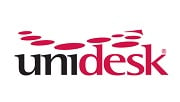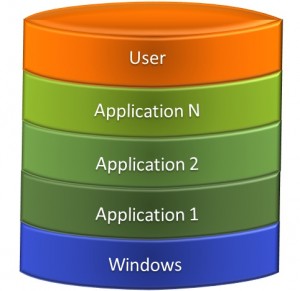AppSense DesktopNow and Unidesk Virtual Desktop Management
*This post originally appeared on the AppSense blog prior to the rebrand in January 2017, when AppSense, LANDESK, Shavlik, Wavelink, and HEAT Software merged under the new name Ivanti.
Over the last few years AppSense has seen a number of customers deploying Unidesk in conjunction with DesktopNow to deliver a scalable and robust VDI solution for their users.
A recent customer engagement gave AppSense the opportunity to demonstrate the cross platform personalization capabilities of AppSense DesktopNow’s Environment Manager solution across the customer’s full application and desktop delivery portfolio in tandem with the virtual desktop management capabilities of Unidesk.
About Unidesk
Unidesk is a market leader in the VDI layering technology workspace. The concept of layering is aimed at resolving various pain points associated with VDI as it scales, primarily by enabling the use of non-persistent virtual desktops, including:
- Application virtualization complexity
- Too many Windows images
- High VDI storage costs
- Poor storage performance
Unidesk Layering
Layering decouples the Windows “blob” into its component parts. These parts can then be individually managed, modified and brought back together to provide the end user with a merged yet seamless user experience.

About DesktopNow
AppSense DesktopNow can be deployed together with Unidesk in order to manage the Windows desktop environment for the end user. Key features of the DesktopNow product suite include:
- Environment Manager
- Cross platform user personalization
- Configuration of the user environment driven by Enterprise policy
- Application Manager
- Removal or addition of admin rights facilitated by Privilege Management
- Application control and licensing enforcement endorsed by Microsoft
- Performance Manager
- Improved user experience and response times
- Increased VM density due to enhanced CPU and memory management
When used together with Unidesk, organizations benefit from:
- A dynamic, efficiently-delivered VDI infrastructure, with users able to seamlessly roam into physical desktops and also Terminal Server/RDSH sessions with the same desktop experience
- Dramatically fewer master images, since Unidesk allows for dynamic composition of the Windows applications based on context, and AppSense DesktopNow provides dynamic composition of the desktop environment, also based on context
- Improved user response and smoother performance as Performance Manager and Application Manager restrict and control installation and resource consumption of rogue apps.
Interoperability can be fun
Under the hood, Unidesk and AppSense DesktopNow both utilize Windows drivers. In order to allow Unidesk and DesktopNow to work together it is advised that the Administrator implements the following registry change to the Unidesk OS base layer prior to deployment.
Registry Key: HKLM\System\CurrentControlSet\Services\unifltr Value Name: ForceFullPathOnImageLoad Value Type: REG_DWORD Value Data: 1
This change allows the AppSense kernel driver components to interact as expected with those from Unidesk. Without this engineering setting, issues can be seen with Environment Manager due to the path handling employed by Unidesk components.
With AppSense and Unidesk together, the concept of layering can be taken to new levels, and the combined benefits of our solutions deliver great efficiency and lower operational and infrastructure costs. Happy layering!